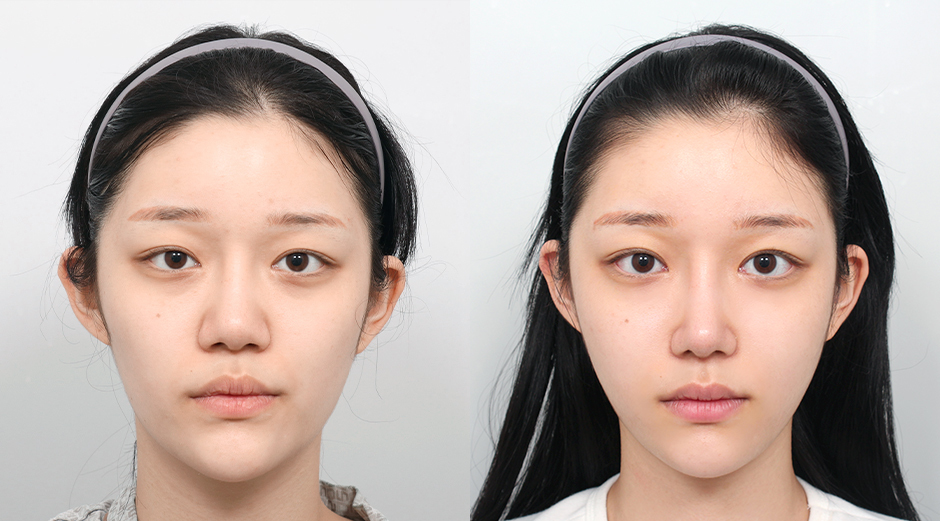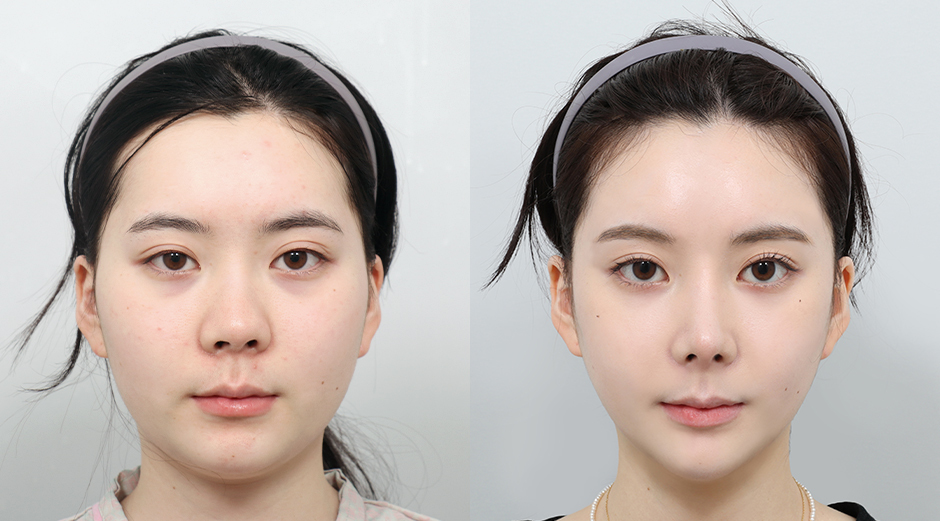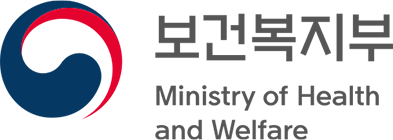Navigating the World of Facial Contouring Surgery
Table of Contents
1. Understanding Facial Contouring Procedures
2. Techniques in Soft Tissue Contouring
3. Facial Contouring at AB Plastic Surgery Korea
Millions of people strive for the perfect appearance, and facial contouring surgery is one of the most sought-after cosmetic enhancements today. Known worldwide for its pioneering work in cosmetic surgery, Korea has elevated facial contouring from a simple trend to an art form. This guide takes a closer look at the expert techniques, precise methods, and current trends that shape soft tissue contouring in Korea, and at AB Plastic Surgery, the global hub for cosmetic surgery excellence.

Understanding Facial Contouring Surgery Procedures
What is Facial Contouring Surgery?

Facial contouring surgery refers to a variety of procedures aimed at sculpting the face to achieve a more aesthetically pleasing balance and symmetry. These procedures can range from minimally invasive injections to more comprehensive surgical adjustments. The primary objective is to harmonize facial features, enhance proportions, and, in some cases, correct structural imbalances that cannot be addressed through non-surgical means alone. Ultimately, facial contouring is about aligning one's external appearance with their self-perception, thereby boosting confidence and self-esteem.
What is Soft Tissue Contouring?
Soft tissue contouring is a critical component of facial aesthetics, focusing on the modification of the face's softer elements—such as fat, muscle, and skin—to refine and rejuvenate one's appearance.
Techniques such as dermal fillers, fat transfer, and thread lifts allow us to tailor treatments to individual needs, offering solutions that range from subtle enhancements to more dramatic transformations. These procedures can address a variety of concerns, including aging effects, asymmetries, and loss of volume, making them versatile tools in the aesthetic arsenal.
Techniques in Soft Tissue Contouring

Soft tissue contouring has revolutionized the way we approach facial aesthetics, offering individuals the opportunity to enhance their features with minimal downtime and increasingly natural-looking results. At AB Plastic Surgery Korea, a leader in cosmetic surgery innovations, three primary techniques have emerged as the cornerstone of soft tissue contouring: dermal fillers, fat transfer techniques, and thread lifting. Each method comes with its unique set of applications, benefits, and considerations.
Dermal Fillers: Types, Areas of Application, and Expected Outcomes.
Dermal fillers have become a cornerstone of non-surgical facial rejuvenation, particularly celebrated in Korea for their ability to deliver dramatic yet natural-looking results without the need for invasive surgery. These injectables serve a multifaceted purpose: they not only add volume where it's needed but also smooth out wrinkles and fine lines, enhancing the overall facial contours and restoring a youthful complexion.
Types of Dermal Fillers
The world of dermal fillers is diverse, with each type tailored to address specific concerns and areas of the face. The most commonly used fillers include:
-
Hyaluronic Acid (HA): Renowned for its hydrating properties, HA fillers are popular for their soft, natural feel and the ability to dissolve over time, offering flexibility in facial contouring. They are perfect for adding volume to the lips, cheeks, and diminishing fine lines around the mouth and forehead.
-
Calcium Hydroxylapatite (CaHA): With a slightly thicker consistency, CaHA fillers are ideal for deeper lines and areas requiring more structural support, such as the nasolabial folds and marionette lines. They also stimulate natural collagen production, providing longer-lasting results.
-
Poly-L-Lactic Acid: Designed as a biocompatible and biodegradable synthetic substance, this filler acts more as a collagen stimulator. With results unfolding gradually over a series of treatments, it's perfect for restoring volume in the face and addressing deeper facial wrinkles.
-
Polymethylmethacrylate Beads (PMMA): As a semi-permanent filler, PMMA is used for deep wrinkles, furrows, and to augment thinner lips. It combines microspheres with a collagen gel to provide support and firmness to areas with significant volume loss.
Areas of Application for Dermal Fillers
The versatility of dermal fillers makes them suitable for a wide range of applications:
-
Cheeks: Fillers can restore lost volume to the cheeks, giving a more youthful and lifted appearance.
-
Lips: Enhancing lip volume and shape for a fuller, more defined look.
-
Under the Eyes: Addressing hollows and dark circles to rejuvenate tired eyes.
-
Nasolabial Folds and Marionette Lines: Softening the appearance of deep creases around the mouth and chin.
-
Jawline and Chin: Reshaping and defining the jawline and chin area for a more balanced facial profile.

Expected Outcomes of Dermal Fillers
The outcomes of dermal filler treatments can be transformative, offering an immediate improvement in facial volume and the reduction of fine lines and wrinkles. Patients can expect a more refreshed and youthful appearance, with results that can last from 6 months to over a year, depending on the type of filler used, the area treated, and the individual's metabolism. The beauty of dermal fillers lies in their ability to provide substantial aesthetic enhancements with minimal downtime, allowing individuals to return to their daily routines almost immediately after treatment.
In Korea, where the demand for non-surgical facial aesthetic treatments continues to grow, dermal fillers are celebrated for their efficacy and the natural-looking results they achieve. As with any cosmetic procedure, the key to successful outcomes with dermal fillers lies in choosing an experienced practitioner who understands the subtleties of facial anatomy and can tailor the treatment to meet the unique needs and goals of each patient.
Fat Transfer Techniques: Procedure steps, benefits, and suitability criteria.
Fat transfer, also known as autologous fat grafting or fat injection, is a revolutionary procedure that uses a patient's own fat to enhance and volumize other parts of their body, including the face. This technique has gained immense popularity for its natural results and dual benefits.
Fat Transfer Procedure Steps
The fat transfer process is meticulously carried out in three primary stages:
-
Harvesting: The first step involves the extraction of fat from the donor area, which is typically a part of the body with excess fat, such as the abdomen, thighs, or buttocks. This is done using a gentle liposuction technique, where a cannula is inserted through a small incision to suction out the fat. The procedure is carefully performed to ensure the viability of the fat cells for transfer.
-
Purification: Once the fat is harvested, it undergoes a purification process. This can be done through centrifugation or filtration, aiming to separate the healthy, intact fat cells from the damaged cells, blood, and other fluids. The purified fat is then prepared for injection, optimizing the conditions for the highest possible rate of fat cell survival.
-
Injection: The final step involves injecting the purified fat into the target area. Using specialized cannulas, the surgeon strategically places tiny amounts of fat across the recipient site. This step is performed with precision and artistry, ensuring the fat is evenly distributed for a smooth, natural-looking result. The technique emphasizes creating natural contours that harmonize with the patient's overall facial structure.
Benefits of the Fat Transfer Procedure
Fat transfer techniques offer several compelling advantages:
-
Natural Results: Since the procedure uses the patient's own fat, the results are incredibly natural in both look and feel.
-
Dual Benefit: Fat transfer provides a two-fold benefit – reducing unwanted fat from one area while enhancing another.
-
Long-lasting: Unlike many other fillers, the results of a fat transfer can last for many years, as the transferred fat integrates with the existing tissues.
-
Minimally Invasive: The procedure is less invasive than traditional plastic surgery, with most patients experiencing quicker recovery times.
-
Safety: The risk of allergic reactions or rejection is significantly reduced since the patient's own biological material is used.
Suitability Criteria
Not everyone is an ideal candidate for fat transfer. The following criteria help determine suitability:
-
Good Health: Candidates should be in good overall health, with no underlying conditions that could impair healing or increase surgical risks.
-
Adequate Fat Reserves: There must be sufficient fat in donor areas to harvest for the transfer.
-
Non-smoker: Smoking can impede healing, so non-smokers or those willing to quit before and after the procedure are preferred.
-
Skin Elasticity: While not always a strict requirement, better skin elasticity can enhance the results of the fat transfer, particularly in the area where fat is harvested.
Thread Lifting: How It Works, Advantages, and Post-Procedure Care.
Thread lifting is an innovative, minimally invasive procedure designed to lift and tighten sagging skin tissues, offering a rejuvenating effect without the need for traditional surgical facelifts. This technique is one of the most popular among AB Plastic Surgery patients because of its effectiveness, minimal downtime, and immediate results. Here’s a detailed look at how thread lifting works, its numerous benefits, and the essential care needed after the procedure.
How Thread Lifting Works
Thread lifting involves the insertion of temporary, biodegradable threads into the subcutaneous layer of the skin. These threads are made from the same biocompatible materials used in medical sutures, which dissolve naturally over time. The procedure is performed under local anesthesia to minimize discomfort.
-
Insertion: A fine needle or cannula is used to insert the threads into predetermined areas of the face or neck that require lifting.Types of threads are chosen based on the individual's condition.
-
Lifting: Once inserted, the threads are pulled tight to lift the sagging skin into a more youthful and desired position. The threads have tiny cones or barbs that latch onto the skin tissue, providing support to the lifted structure.

Advantages of Thread Lifting
Thread lifting offers several compelling advantages, making it an attractive option for those seeking facial rejuvenation:
-
Minimally Invasive: Unlike traditional facelifts, thread lifts require no significant incisions, resulting in less scarring and a lower risk of complications.
-
Short Recovery Time: Patients can often return to their normal activities within a few days, with minimal downtime required.
-
Immediate Results: The lifting effect is visible immediately after the procedure, with the skin appearing tighter and more contoured.
-
Natural-Looking Outcomes: Thread lifts provide a subtle and natural-looking lift, avoiding the risk of the ‘overdone’ look associated with some surgical facelifts.
-
Collagen Production: Besides lifting the skin, the threads stimulate the body’s natural production of collagen around the threads. This process enhances the firmness and volume of the skin, contributing to a more youthful appearance over time.
Thread Lifting: Post-Procedure Care
Proper care after a thread lifting procedure is crucial to maximize the longevity of the results and ensure a smooth recovery:
-
Avoid Strenuous Activities: It’s recommended to avoid heavy physical exercise and activities that involve excessive facial movements for about 2 weeks.
-
Minimal Facial Manipulation: Try to avoid rubbing or massaging the face aggressively, especially in the areas where threads have been placed, to prevent displacement.
-
Sleeping Position: Sleeping on your back with your head elevated can help reduce swelling and avoid putting pressure on the face.
-
Follow-Up Appointments: Attend all scheduled follow-up appointments so your doctor can monitor your healing and the condition of the threads.
-
Sun Protection: Use a high-SPF sunscreen and avoid prolonged sun exposure to protect the skin and maintain the results of the procedure.
In our previous post, we discussed how to choose the right facial lift procedure for you. Check it out for more information: Thread Lift vs. Mini Lifting vs. Forehead Lift: Which Is Right for You?
Facial Contouring Surgery at AB Plastic Surgery Korea

Understanding the various aspects of facial contouring surgery is crucial for anyone considering enhancing their appearance through cosmetic procedures. The journey towards achieving your ideal aesthetic goals is deeply personal and requires a thoughtful approach to selecting the right techniques that will best suit your unique facial structure and beauty aspirations. With advancements in soft tissue contouring, including dermal fillers, fat transfer techniques, and thread lifting, the possibilities for subtle, natural-looking enhancements have never been more accessible or diverse.
We encourage you to consider how the latest techniques in soft tissue contouring can align with your aesthetic desires. Whether you're looking to restore lost volume, refine your facial contours, or rejuvenate your overall appearance, the first step is a comprehensive consultation with a skilled professional.
We invite you to schedule a consultation with AB Plastic Surgery Korea to explore personalized facial contouring options. Our team of experts is dedicated to understanding your aesthetic goals and guiding you through a customized treatment plan designed to achieve the beautiful, natural-looking results you desire. Begin your journey towards a more confident and radiant you by reaching out today.





